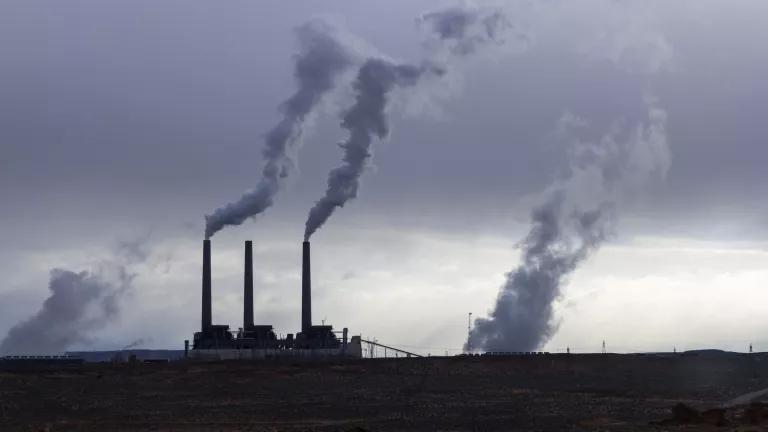Multifamily Energy Efficiency Programs Not Sealing the Deal
As we collectively work to curb emissions, we must ensure that the benefits of energy-efficient buildings are equitably delivered and that the health of all people is protected from toxic chemicals.

This blog was co-authored by Rebecca Stamm and Austin Wiebe at Healthy Building Network (HBN)
A well-insulated and sealed building enclosure is key for both energy efficiency and health—so we were surprised when our recent research revealed that insulation and air sealing may not be happening in many energy efficiency programs for affordable multifamily buildings. Insulation and air sealing improvements are also critical to the process of building decarbonization because these enclosure measures can allow installation of smaller heat pumps, making upgrades more affordable.
In 2020, Energy Efficiency for All supported HBN and NRDC to investigate insulation and air sealing as a part of energy efficiency upgrades to low-income multifamily housing. Our goal was to understand the current state and challenges that exist in these programs, and because our previous research found that insulation and air-sealing materials can contain hazardous chemicals, to identify opportunities to advance the use of safer materials. Some insulation and air sealing measures that could be part of an energy efficiency upgrade include: improving roof, attic, and wall insulation; sealing ducts in HVAC (heating, ventilation, and air-conditioning) systems; and sealing gaps around doors and windows. Products used in these applications can contain hazardous chemicals like formaldehyde, halogenated flame retardants, and phthalates.
To gain understanding of the current state of insulation and air sealing in energy efficiency programs for low-income multifamily buildings, we did an in-depth analysis of 18 programs in 5 states (California, Illinois, Louisiana, Minnesota, and Missouri) by reviewing publicly available information such as program reports and speaking with program implementers. To get a better understanding of technical challenges, we also conducted interviews with energy efficiency upgrade experts.
We found that many (though not all) programs include insulation and air sealing related to pipes and HVAC ducts as allowable measures. However, HVAC and most building enclosure insulation and air sealing measures are not commonly implemented when upgrades are performed, especially for upgrades performed in occupied buildings. Some of the reasons for this include:
- The program does not allow HVAC and/or building enclosure insulation and air sealing measures.
- The program does not adequately support the installation of these measures, such as through robust incentives.
- There may be logistical and/or technical challenges to completing these measures, such as needing access to residential units to air seal, which can be intrusive to occupants.
We also found many opportunities to better support insulation and air sealing in energy efficiency programs and ensure safer materials are used. We recommend:
- Improving program specifications to prohibit the use of hazardous chemicals in upgrades, including in the materials used for air sealing and insulation. For example, formaldehyde-free insulation materials are widely available, so formaldehyde-containing materials should be prohibited in program specifications. Our guidance on healthier insulation and sealant materials should be integrated, and we also have guidance on how to specify healthier materials.
- Improving data collection and standardizing reporting on the materials used in upgrades, the type and amount (square footage) of each measure installed in projects, and resulting total energy savings.
- Updating program structures to robustly incentivize HVAC and building enclosure insulation and air sealing measures in low-income multifamily buildings.
- Conducting research to expand the evidence on energy efficiency and indoor environmental quality benefits of HVAC and building enclosure insulation and air sealing in low-income multifamily housing.
Everyone has the right to a secure and healthy home and a clean and safe environment. As we collectively work to curb emissions and slow the impacts of climate change, we must ensure that the benefits of energy efficient buildings are equitably delivered and that the health of all people is protected from toxic chemicals. The above program improvements would help reduce energy bills, cut building climate emissions, and make building decarbonization less costly. And perhaps most importantly, these improvements are an important step towards healthier spaces in affordable multifamily housing.
Rebecca Stamm is passionate about improving human and environmental health through safer products. As Senior Researcher at Healthy Building Network, she works with the team to conduct vital research on the life cycle chemical impacts of materials to drive transparency and innovation. Rebecca has a B.S. from Rose-Hulman Institute of Technology and M.S. from Purdue University, where she studied Chemical Engineering, and has worked extensively in building product and chemical hazard research.
Austin Wiebe, Senior Director of Communications and Marketing, joined HBN in 2020. Austin previously served at CLUES – Comunidades Latinas Unidas en Servicio, where he managed the development of a fully bilingual website, grew event and social media audiences and oversaw all communications and marketing strategies. He has worked as a writer, editor, web manager and creative professional with organizations including CSC Publishing, the National Multiple Sclerosis Society and Xperitas. Austin studied journalism, Spanish and design at the University of Minnesota.



